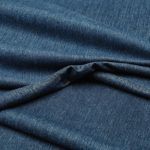Essential Ingredients for Your Mask
Choosing the right natural ingredients can revolutionize your DIY hair care routine. Start with the basics: avocado and coconut oil. Avocado is rich in vitamins A, D, E, and B6, providing essential hair nourishment. Coconut oil, on the other hand, penetrates the hair shaft, offering deep moisture and repair. These base ingredients not only condition but also fortify hair strands against breakage.
Essential oils add another layer of benefit. Lavender oil, known for its soothing scent, can promote hair growth and reduce stress, which often leads to hair loss. Tea tree oil helps cleanse the scalp, while rosemary oil enhances shine and thickness.
Also read : Busy Women’s Peak Fitness Guide: Craft Your Perfect Workout Regimen Even on a Hectic Schedule
Selecting the perfect combination depends on hair type. If you have dry hair, opt for richer oils like avocado and incorporate elements like honey for added hydration. For oily hair, choose lighter oils such as jojoba. Experimenting with these combinations allows you to tailor your mask to your unique hair needs. It’s beneficial to blend small amounts first, noting how your hair responds. Embrace a little creativity and ensure your hair nourishment reaches optimal levels.
Introduction to DIY Natural Deep Conditioning
The world of DIY hair care offers an exciting exploration into achieving hair health naturally. Deep conditioning is a critical process in hair care, giving hair the hydration and nutrients it craves. This powerful treatment revives dry and damaged strands and maintains overall hair vitality. Regular deep conditioning ensures that your hair remains strong, resilient, and shiny.
Also read : Create Your Ultimate Home Yoga Sanctuary: Key Tips for Optimal Comfort and Mindfulness
The essence of a DIY deep conditioning mask lies in its natural conditioning ingredients. Beneficial natural elements, such as avocado and coconut oil, provide deep nourishment without the harsh chemicals found in commercial products. Creating your own mask allows you to harness the full potential of these ingredients, tailoring the formula to meet your specific hair health needs.
Embarking on a journey to make a DIY deep conditioning mask fulfills a dual purpose: it customizes a treatment to suit your unique hair type and infuses your routine with the benefits of all-natural goodness. With a little practice, you can effortlessly blend a concoction that supplies your hair with vitality while maintaining a natural, holistic approach. This empowerment in personal care lets you address your hair concerns naturally and effectively.
Step-by-Step Guide to Create Your Mask
Creating a DIY hair care mask begins with preparing the right mixture to suit your unique needs. Start by gathering the natural ingredients you have chosen, such as avocado and coconut oil, which are renowned for their hair nourishing properties. Essential oils, like lavender or tea tree oil, can enhance the formula with their added benefits.
Begin with recommended measurements of about one ripe avocado, two tablespoons of coconut oil, and a few drops of your selected essential oil. Blend these ingredients in a bowl until you achieve a smooth paste. The consistency should be thick enough to stay on your hair without dripping.
To ensure thorough coverage and maximized benefits, be mindful of the blending techniques. A well-mixed mask allows for even distribution across your hair strands. Customizing the recipe depending on hair type is key. For dry hair, consider adding a tablespoon of honey for extra moisture. If your hair is oily, balancing with a lighter oil like jojoba can be beneficial.
Experiment with small amounts initially, adjusting the recipe based on how your hair responds. This natural conditioning approach offers a tailored hair treatment, emphasizing personal hair health.
Application Techniques for Maximum Effect
To ensure your hair treatment techniques yield optimal results, apply your DIY mask with precision. Whether on dry or wet hair, the method you choose significantly impacts efficacy. For dry hair, the mask concentrates on defects and areas with breakages, providing targeted nourishment. Wet hair enhances absorption, with open cuticles allowing deeper penetration of beneficial ingredients.
Styling tips can enhance your conditioning routine. First, section your hair into manageable portions, ensuring each strand receives the mask evenly. Use a wide-tooth comb to distribute the mixture, avoiding harsh pulling or tangling.
After applying the mask, wrap your hair in a warm towel or use a shower cap. This step aids in enhancing absorption, keeping the hair moist and warm to fully activate the mask’s properties.
Leave the mask on for the recommended amount of time to best benefit from its conditioning prowess. Gently rinse out the mask with lukewarm water until completely removed.
These practical techniques improve deep conditioning routines, offering comprehensive benefits from your DIY hair care efforts, leaving your locks luscious and rejuvenated.
Frequency and Timing for Best Results
To achieve optimal results with your DIY hair care regimen, it’s essential to incorporate the mask into your routine wisely. Regular use plays a crucial role in maintaining hair health. Typically, applying a deep conditioning mask once a week suffices for most hair types. However, if your hair is exceptionally dry or damaged, increasing the frequency to twice a week can be beneficial in replenishing moisture and vitality more effectively.
Timing is another pivotal factor. Allowing the mask to sit for 20 to 30 minutes can yield excellent benefits, providing ample opportunity for the natural conditioning ingredients to penetrate deeply into the hair shaft. For enhanced absorption, consider leaving the mask on under a warm towel, using gentle heat to facilitate deeper nourishment.
Integrating this treatment into your hair care routine requires consistency. Select a specific day of the week for your deep conditioning session and stick to it, creating a seamless addition to your existing regimen. Routine not only promotes healthier hair but also conditions it to respond more effectively over time, ensuring a lasting transformation in hair health maintenance.
Safety and Considerations
Creating DIY hair masks offers numerous benefits, but understanding hair care safety is crucial before you begin. Identifying potential allergens is the first step. Common ingredients like essential oils can cause allergic reactions. Conduct a patch test by applying a small amount of the mixture to your inner wrist or behind your ear, and wait 24 hours to check for any adverse reactions. This simple precaution helps ensure your chosen ingredients suit you well.
During mask application, following safety tips is key to preventing damage. Avoid vigorous rubbing or leaving the mask in for excessively long periods, which can overstress the hair. Consider your hair type carefully; while rich oils work wonders for dry hair, they might weigh down fine or oily hair types.
It’s important to account for specific hair conditions when choosing ingredients and methods. Those with colour-treated or chemically processed hair should opt for gentler formulations to prevent fading or further damage. By taking these thoughtful steps, you can enjoy the benefits of natural conditioning confidently and safely, fostering healthier hair habits while maintaining integrity in your hair care routine.
Testimonials and Results
Experiencing a DIY hair care transformation can be incredibly rewarding. To see tangible results, many users have embraced DIY deep conditioning masks. Before-and-after photos from individuals reveal the profound impact of natural conditioning on their hair health. For instance, users report noticeable improvement in hair texture and shine, especially when using ingredients like avocado and coconut oil that provide deep nourishment.
Testimonials consistently highlight how personalizing treatments leads to optimal outcomes. One user mentioned: “After three weeks of using my homemade mask weekly, my hair is softer and more resilient to breakage.” Such experiences underscore the importance of customizing formulas based on individual needs.
Personalization has been key to success stories. Switching ingredients based on hair type ensures each mask meets specific requirements, transforming dull and lifeless hair into healthier, more vibrant locks. Users have taken these adaptable recipes and made them the cornerstone of their hair care routine, reflecting not just in improved aesthetics but also in increased confidence and satisfaction.
These encouraging experiences reinforce the practicality and effectiveness of DIY deep conditioning, motivating others to explore tailored approaches to enhance their hair’s vitality.






